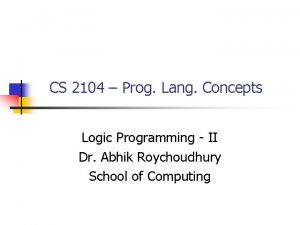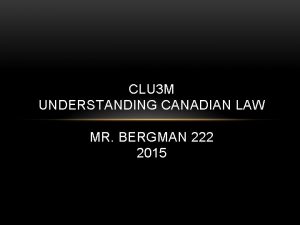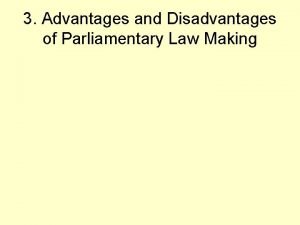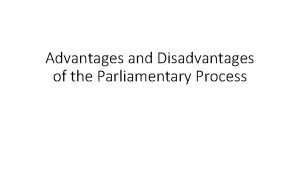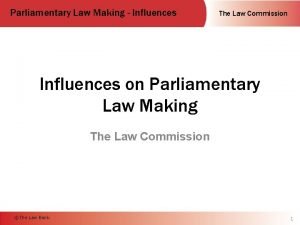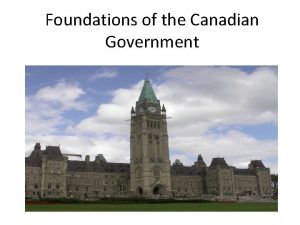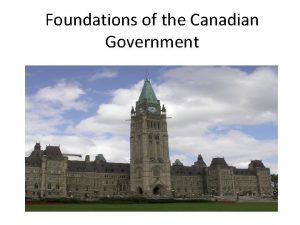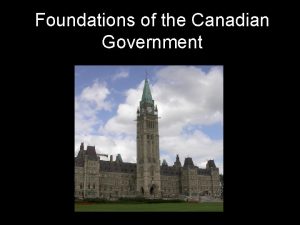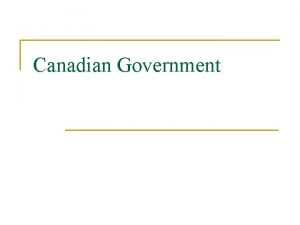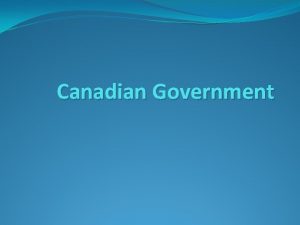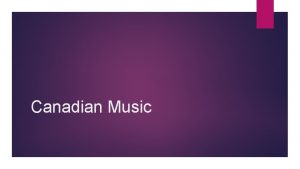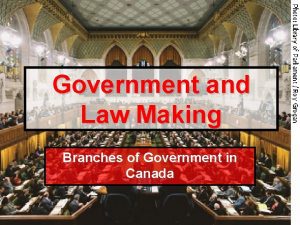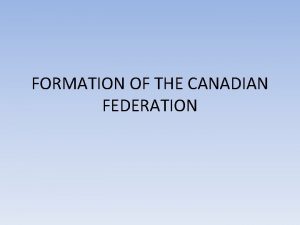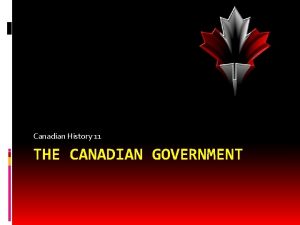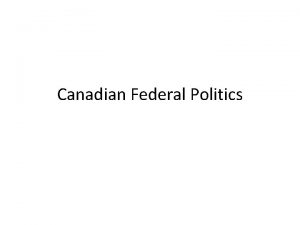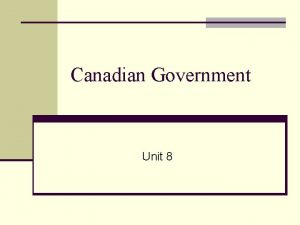CANADIAN LAW 2104 GOVERNMENT AND LAW MAKING CANADIAN













- Slides: 13

CANADIAN LAW 2104 GOVERNMENT AND LAW MAKING CANADIAN GOVERNMGOVERENT CHAPTER G 3

GOVERNMENT IN CANADA • Canada is a federal state (system) a constitutional monarchy and a parliamentary democracy

CANADA’S FEDERAL SYSTEM • Confederation • Canada became a country on July 1, 1867 • 4 colonies of British North America (NS, NB, Canada East (Quebec) and Canada West (Ontario) joined or confederated to form Dominion of Canada • Over time other provinces and territories joined

CANADA’S FEDERAL SYSTEM • Becoming a nation was difficult • Provinces were very different from each • To bring them together into one nation it was decided to create a federal state or system.

LEVELS OF GOVERNMENT • Canada’s government is divided into three levels: Øfederal government (national level – the whole country) Øprovincial government (provincial/territorial level) Ømunicipal government (community/town/city level) • Each level of government is responsible for different tasks.

THREE DISTINCT BRANCHES • Federal and Provincial governments comprised of three distinct branches • Executive • Legislative • Judiciary • Each branch plays a role in making, interpreting, and enforcing laws in Canada

EXECUTIVE BRANCH • This branch of government is responsible for ‘running the country’ – it implements and enforces the laws created by the legislative branch • Comprised of • Prime Minister, • Cabinet (elected MP’s, MHA’s, appointed by PM. Eg Minister of Justice), • Public or Civil service

EXECUTIVE BRANCH • Sets Policies • Proposes and Administers Laws • Controls government spending

EXECUTIVE BRANCH

LEGISLATIVE BRANCH (PARLIAMENT) • This branch of government is responsible for initiating, approving or rejecting laws in Canada • Consists of: • House of Commons (lower house) • Senate (upper house) • At provincial level it is same, but parliament is usually called the Legislature, or Legislative Assembly, with no Senate

LEGISLATIVE BRANCH

THE JUDICIARY • Part of government but independent of other two branches • Made up of justices or judges who adjudicate disputes, interpret the law, and decide on punishments in the court system • Justices are apolitical and independent • Higher court justices (Supreme Court of Canada) are appointed by federal government • Trial court justices at the lower level are appointed by provincial governments

THE JUDICIARY
 Cs 2104
Cs 2104 War making and state making as organized crime summary
War making and state making as organized crime summary Newton's first law and second law and third law
Newton's first law and second law and third law Newton's first law and second law and third law
Newton's first law and second law and third law State and federal constitutions
State and federal constitutions What is inference
What is inference Understanding canadian law (clu3m)
Understanding canadian law (clu3m) Understanding canadian law (clu3m)
Understanding canadian law (clu3m) Advantages of act of parliament
Advantages of act of parliament Advantages and disadvantages of parliamentary law making uk
Advantages and disadvantages of parliamentary law making uk Advantages and disadvantages of parliamentary system
Advantages and disadvantages of parliamentary system Boyles law
Boyles law Boyle's law charles law avogadro's law
Boyle's law charles law avogadro's law Influences on law making
Influences on law making
